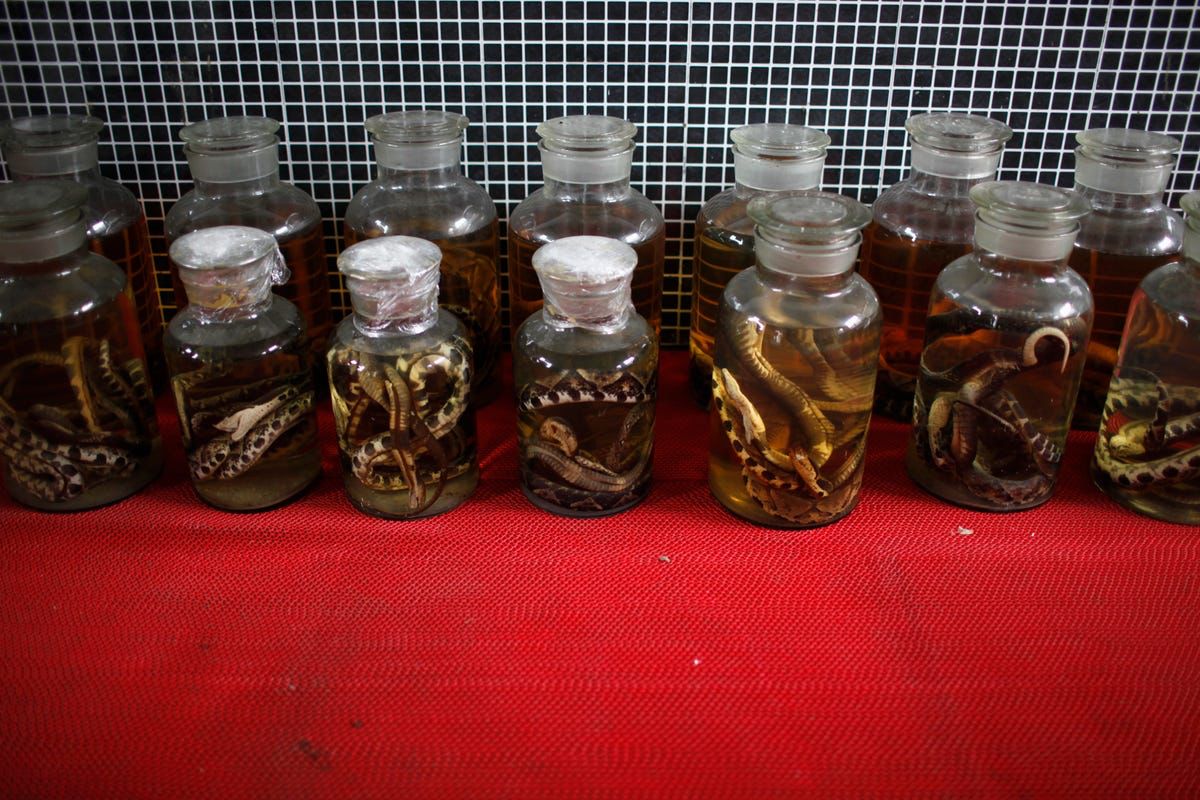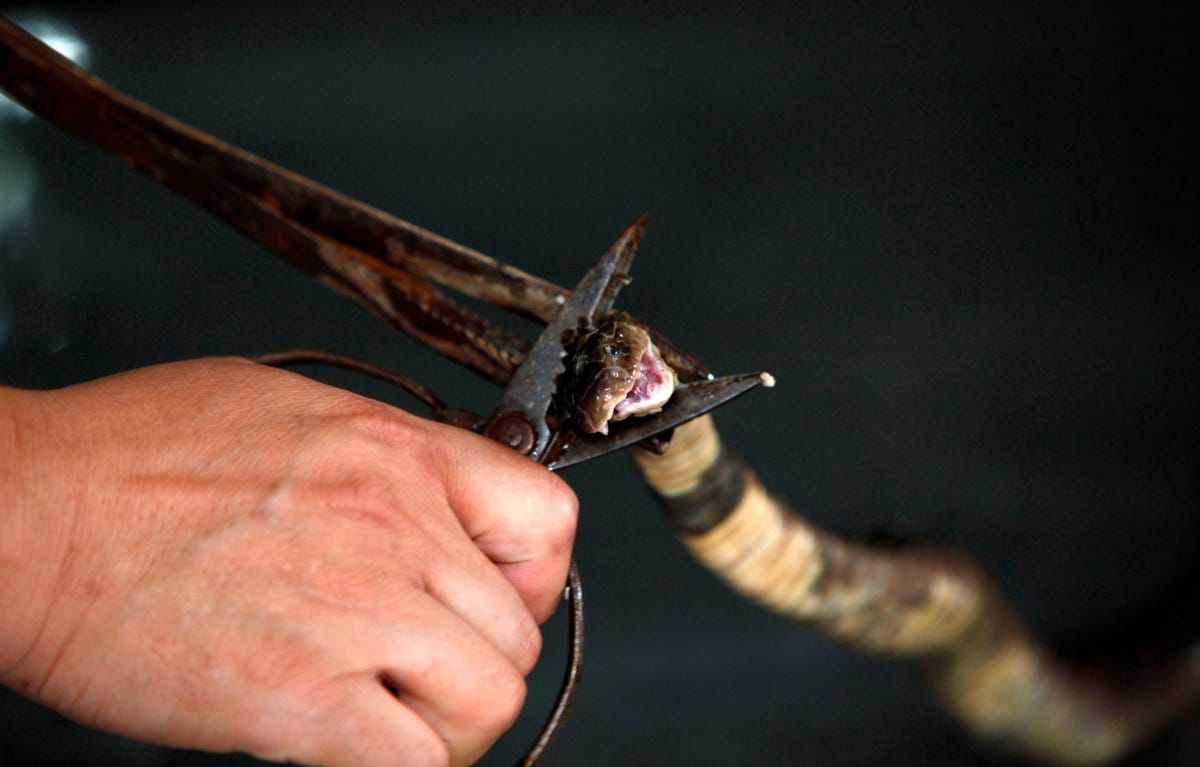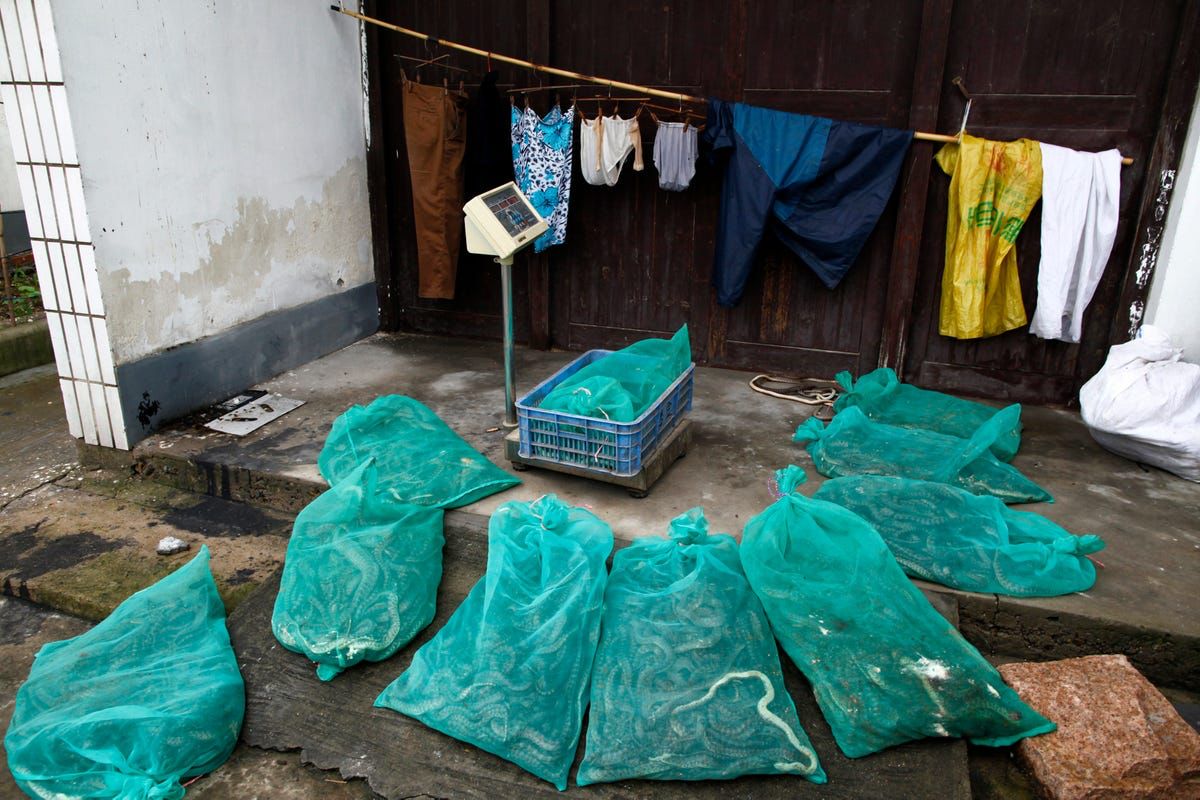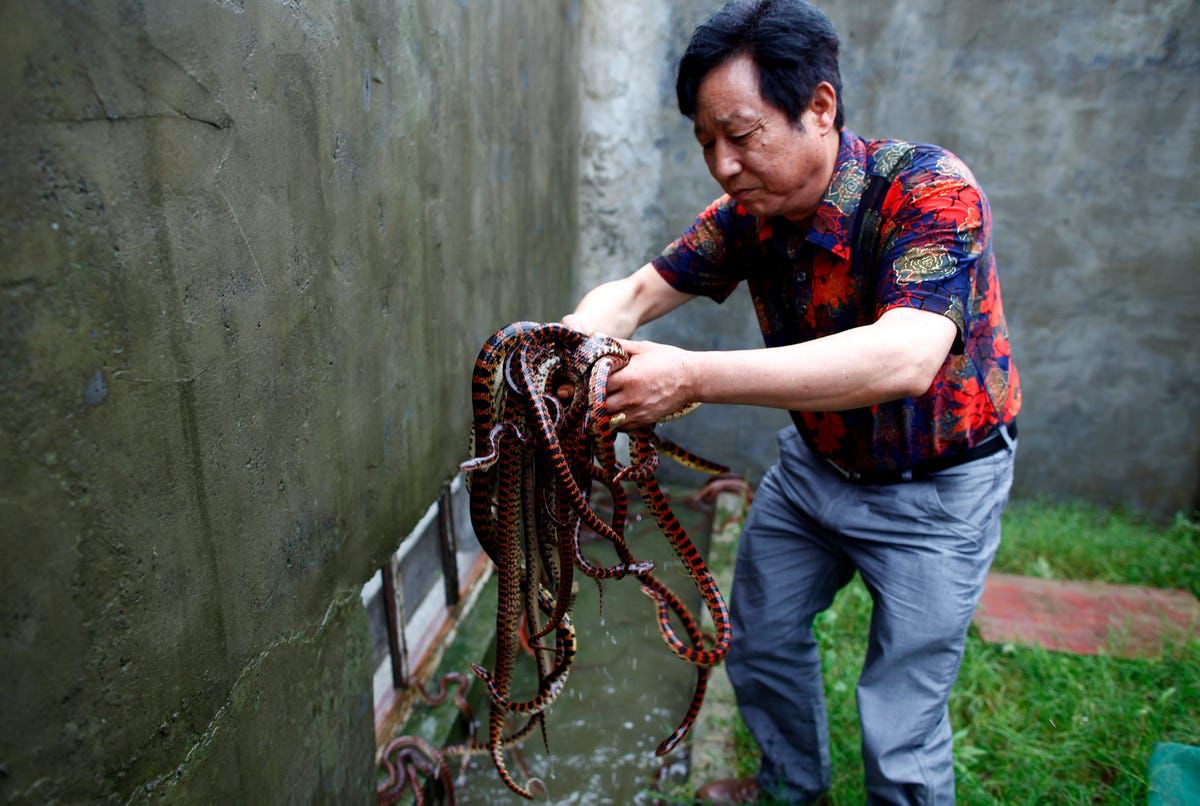A trip to Zisiqiao village in China would perhaps interest Roots Party presidential candidate Prof George Wajackoya.
Prof Wajackoya has stirred the internet with his novel ideas, which he believes will enable Kenya to pay its debt and propel the country to economic prosperity.
Apart from growing marijuana for export, Wajackoya has proposed snake farming as a venture that his government will earnestly support.
But just how lucrative is snake farming? Is the practice as profitable as the Roots Party presidential candidate suggests?
To answer these questions; it is important to train our eyes on the Zisiqiao village in Zhejiang Province, which happens to be one of the biggest centers for snake farming in the world.
Zisiqiao qualifies in every sense for the title of “snake capital of the world.”
There are about 160 families in the village that produce more than 3 million snakes annually, which are sold for food and traditional Chinese medicine.

Snakes under preservation at Zisiqao snake village PHOTO/REUTERS
The snake farmers also export to the United States, Germany, Japan, and South Korea as well.
Overall, the village makes over $12 million (about 1.3 billion) a year from the snake farming business alone.
Pioneer Farmer
But just how did the trade start and thrive in the Chinese village of Zisiqiao?
Yang Hongchang, a 69-year-old farmer, is believed to have first introduced snake breeding to the village in 1985.
It is further told that when the wild snakes Hongchang used to catch and sell became scarce, he researched how to raise snakes at home instead.
After three years of successful breeding — and a healthy profit — the other villagers began to emulate his methods, the BBCreported in 2013.

Snakes heads being chopped off after harvesting their venom PHOTO/REUTERS
Lucrative
Snake farming is quite lucrative due to the growing demand for snake venom on the global market.
It is no secret that pharmaceutical companies spend billions to procure, research, and manufacture snake antivenom.
What’s more, snake gall bladders, livers, and skins are used for manufacturing nutritional supplements sold in Europe, America, Japan, and South Korea.
On a similar scale, snake skin, such as python skin, is highly sought after in the fashion industry.
Apart from snakes being a revered delicacy, the reptiles hold a special place in Chinese culture: Snake is the sixth in the 12-year cycle of the Chinese zodiac sign.
They even celebrate the Chinese Year of the Snake.
The last Chinese Year of the Snake was in 2013, and the next will be in 2025.
Trade in snakes is protected under the Convention on International Trade in Endangered Species of Wild Fauna and Flora (CITES), and since China is a signatory, there has been increased control of international trade.
Still, China and Vietnam remain the largest and most important producers of, and markets for, snake meat. China trades 7,000–9,000 tonnes of snakes a year.

Snakes packed inside mesh bags awaiting transportation PHOTO/REUTERS
Do you have a story you would like us to publish? Please reach us through info@gotta.news
























